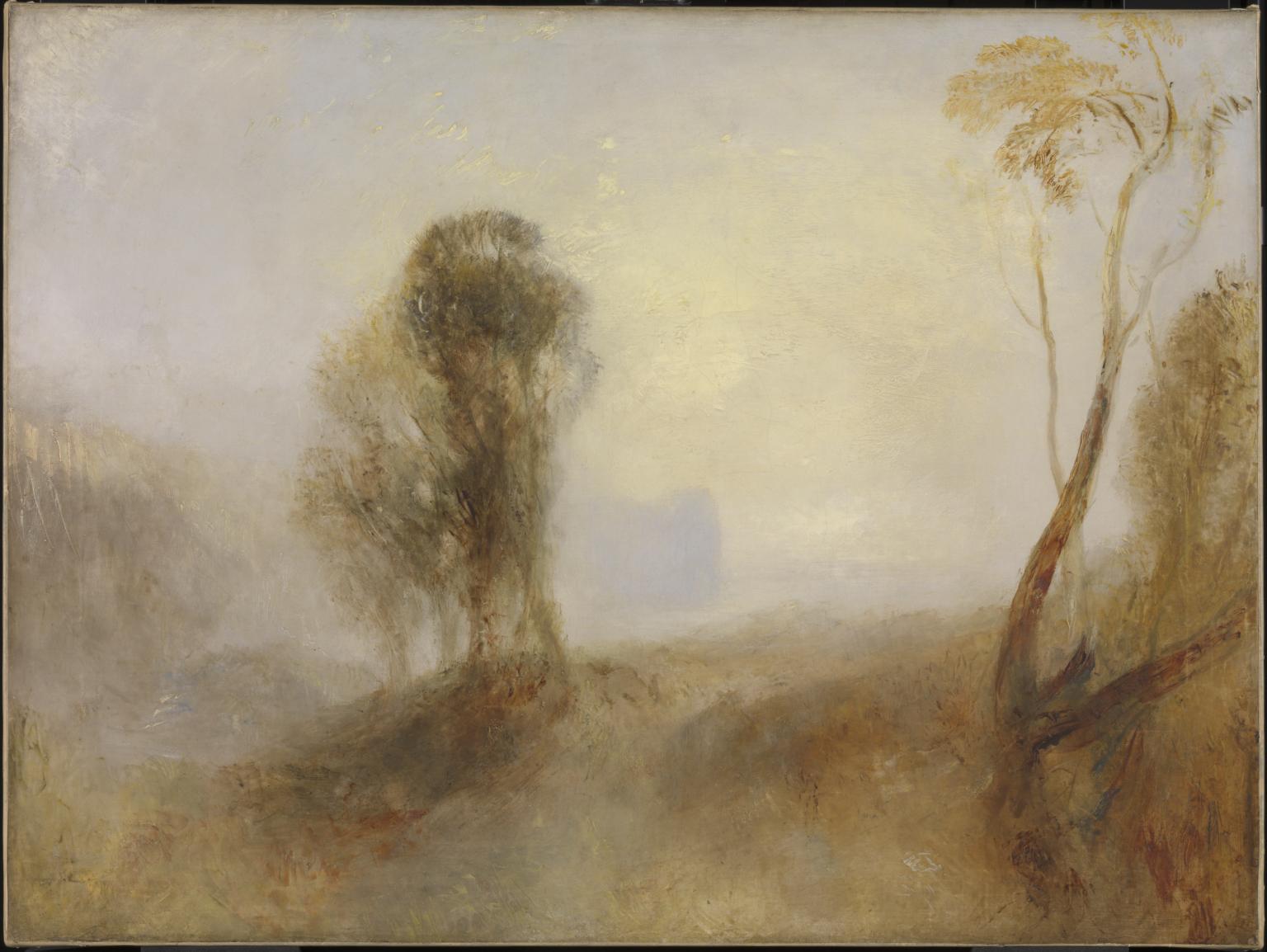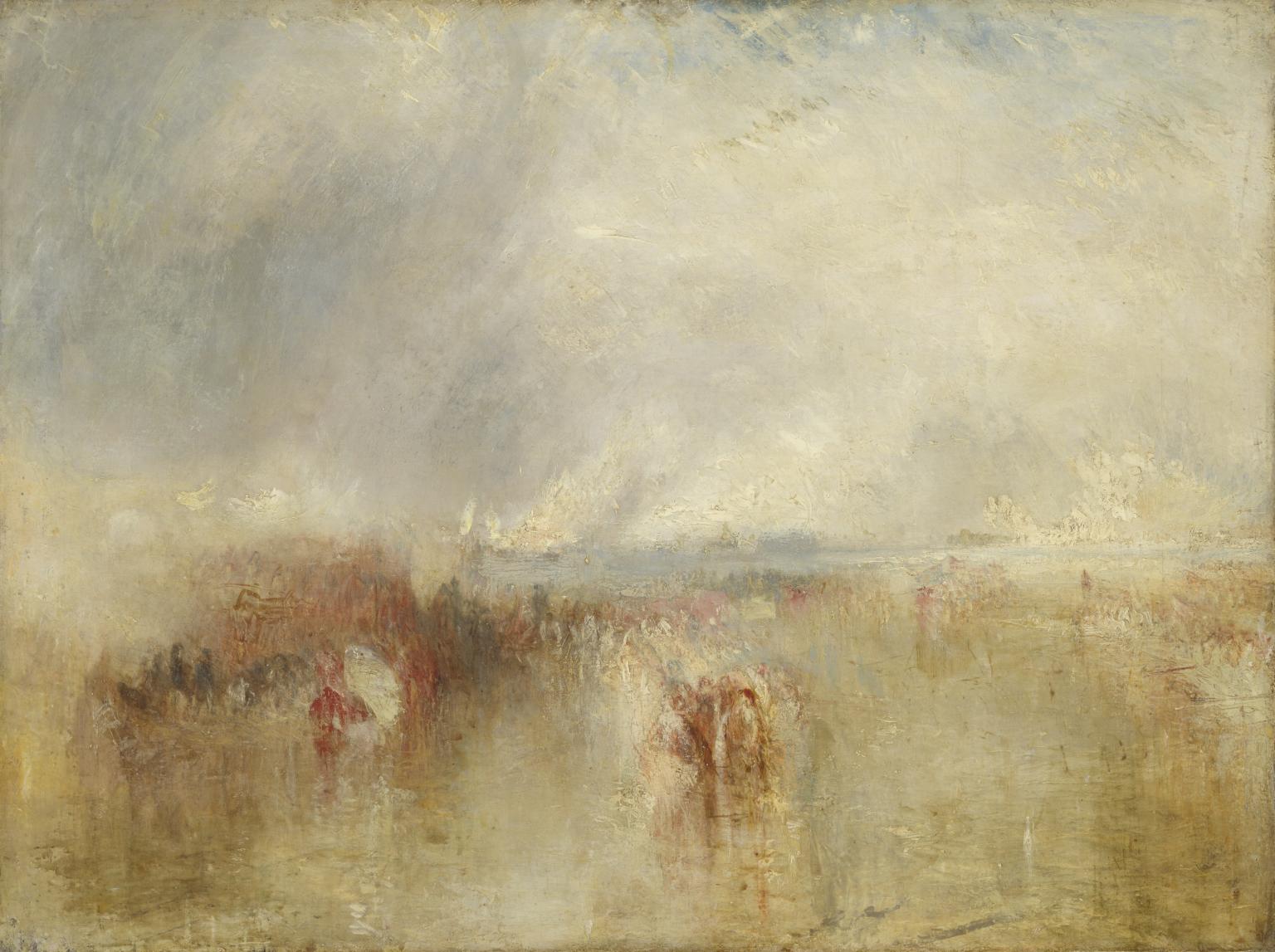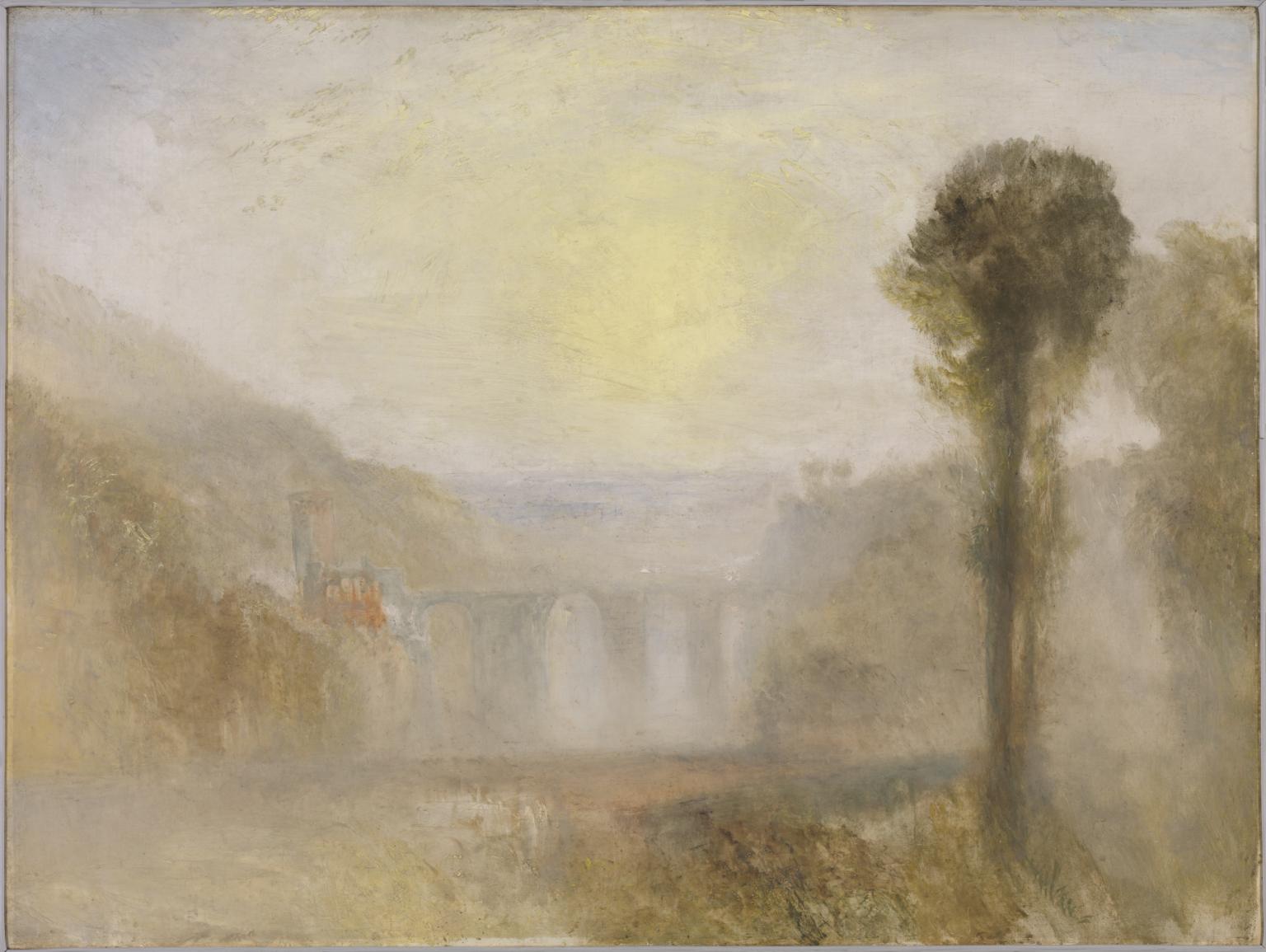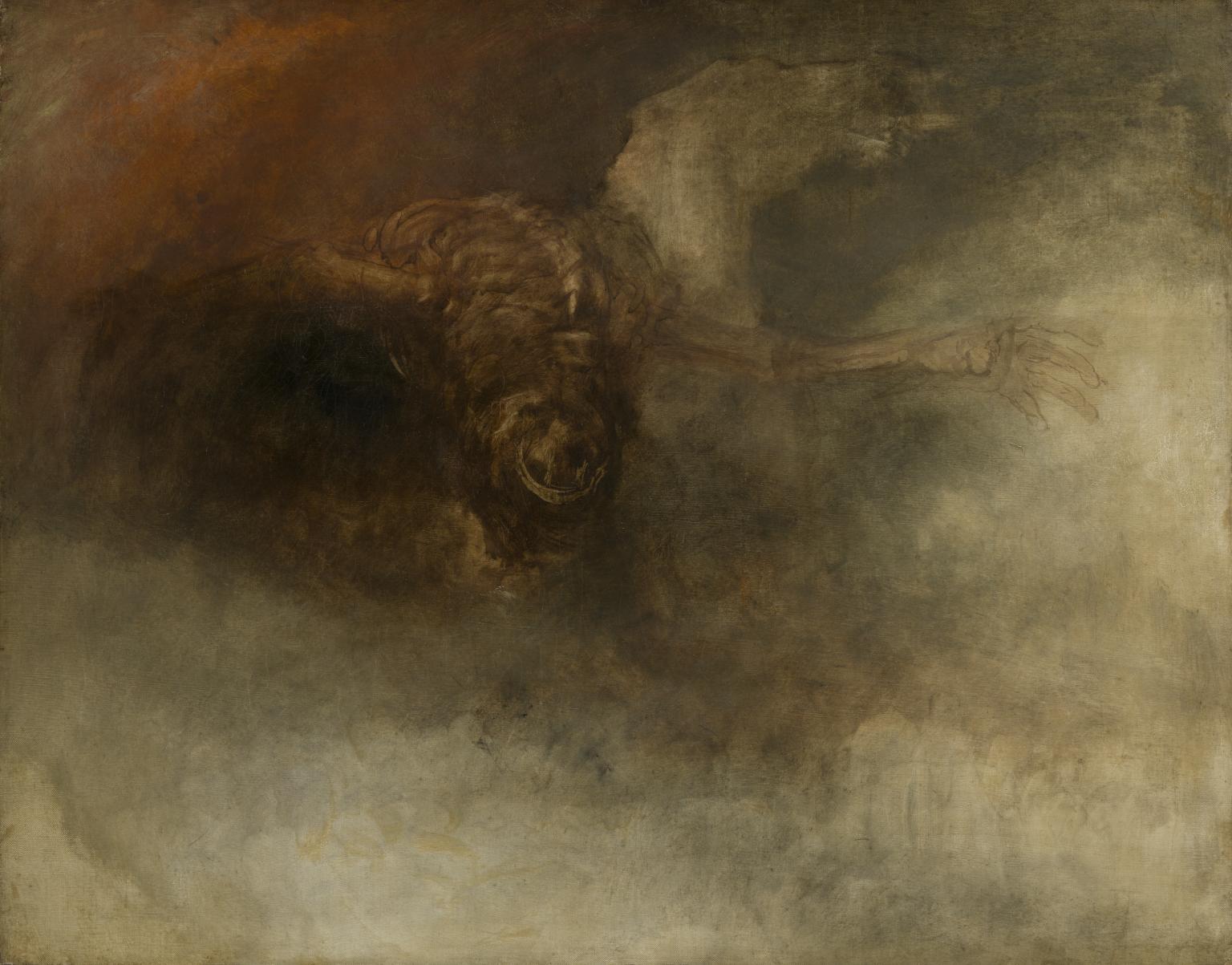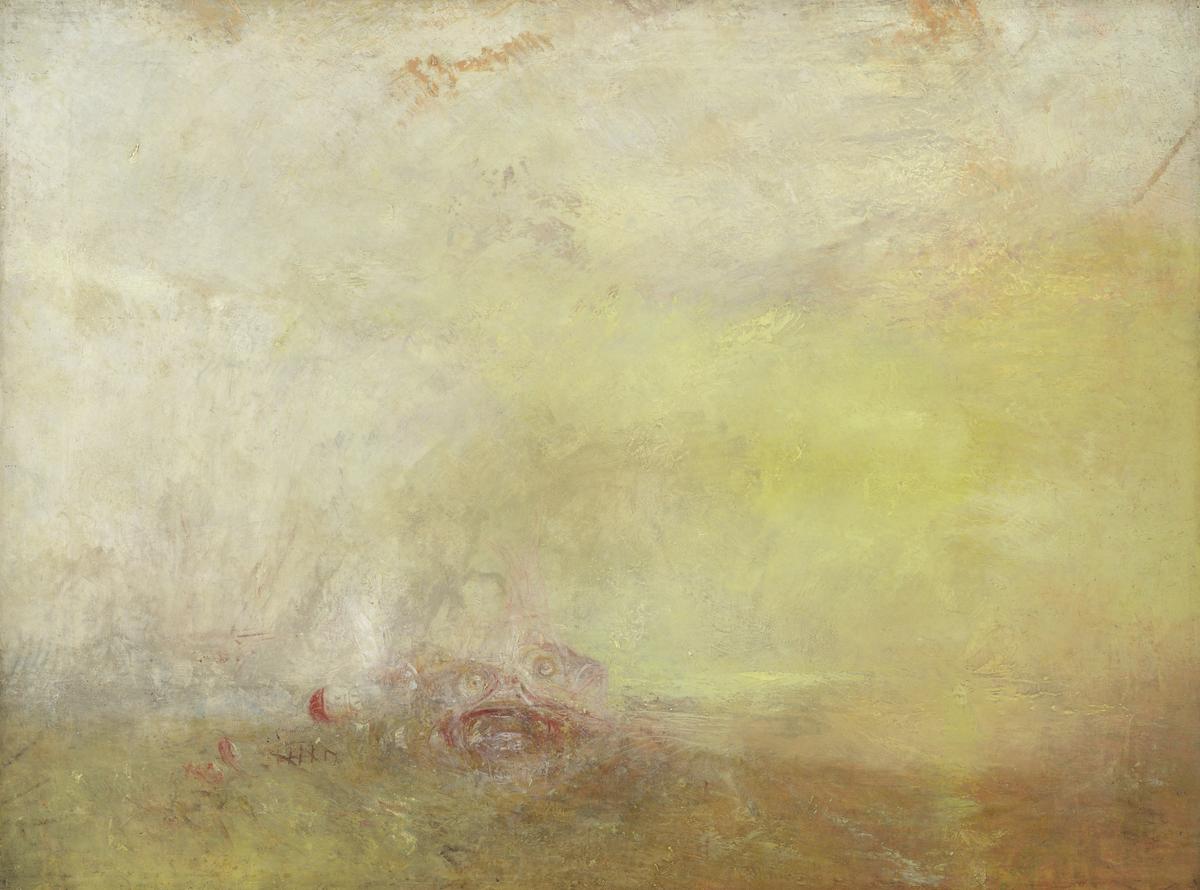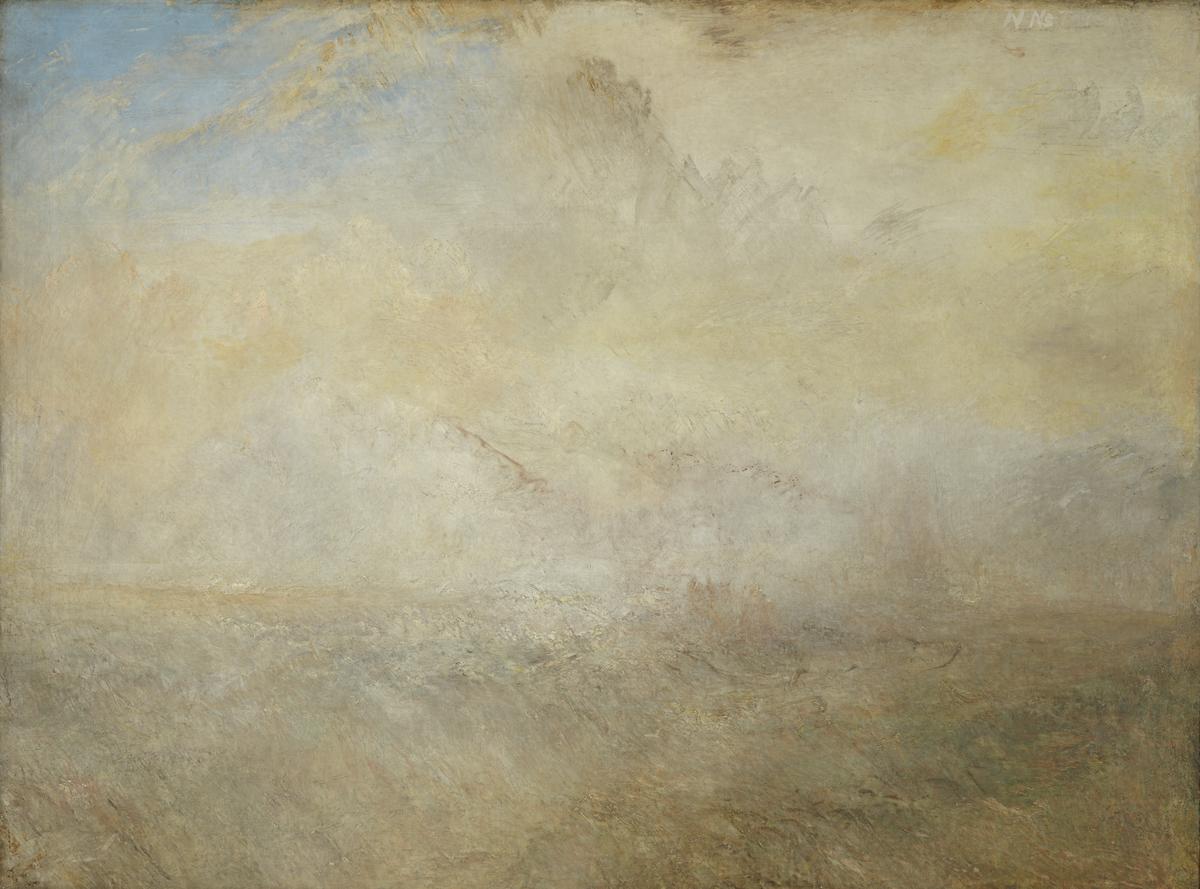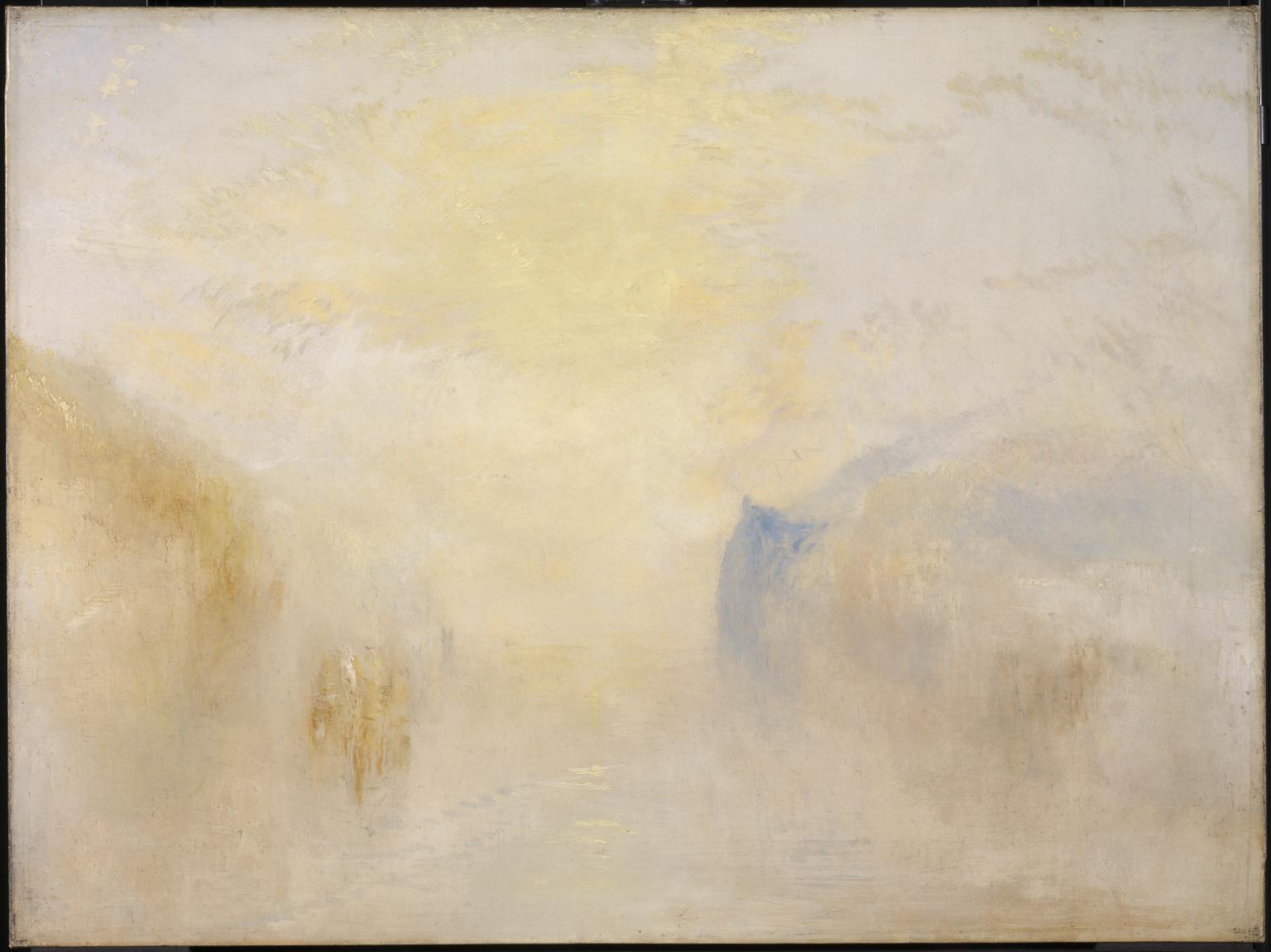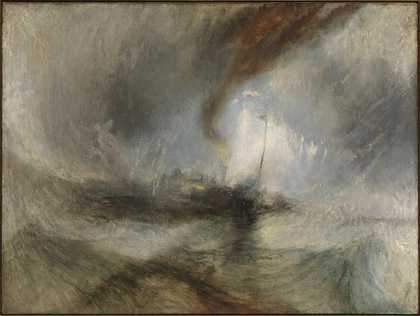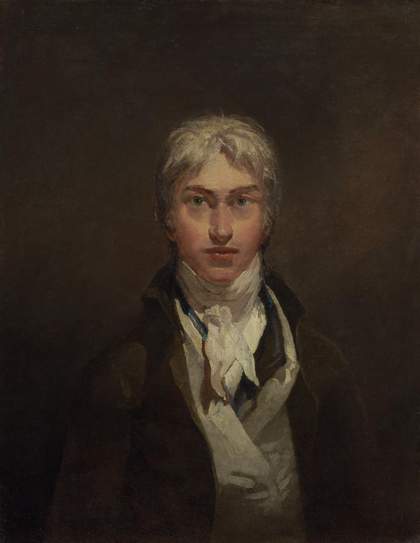Share Turner’s fascination with the sea in all its variety
Turner had a lifelong fascination with the sea. While its prominence within his exhibited pictures is demonstrated in the nearby displays, most of the paintings in this room are more like unfinished essays on the subject. They were among the many apparently incomplete canvases found in Turner’s studio following his death, not exhibited during his lifetime and mostly unseen by his contemporaries.
The paintings range from oil sketches made with finished marine compositions in mind to more experimental late works concerned with capturing the movement and nature of the sea itself. Turner’s many unfinished sea paintings of the 1830s and 1840s reflect the increasing amount of time he spent at the coast, particularly in Margate, where he stayed at the lodging house of a widow, Mrs Booth, who moved with him to London in 1846.
Turner’s depiction of the sea is ever-changing, like the sea itself. Sometimes his paintings delight in its calmer face, revelling in tranquil surfaces reflective of golden sunlight. But he was also fascinated by the sea’s potential as a destructive force: his canvases include terrifying waves, storms and shipwrecks.
Art in this room
